 Originally published October 6, 2000, in Comics Buyer’s Guide #1403
Originally published October 6, 2000, in Comics Buyer’s Guide #1403
It was the moment I nearly resigned from The Incredible Hulk.
I had embarked upon a storyline in which Betty Banner was pregnant. Several issues had already come out, and suddenly I was informed by the powers that be that the storyline was to be—you should pardon the expression—aborted.
“If Bruce and Betty become parents,” I was told, “young readers are not going to care about them anymore. Many young readers see parents as the enemy, and they’re not going to want to read about Bruce and Betty if they seem like the enemy. Giving Betty a baby makes her a mom, and kids don’t want to read about a mom and dad. They want to read about what they see as extensions of themselves. Big kids. People who have babies are grown-ups.”
“But they’re already married!” I protested. “That barn door’s open, and the horse is long gone. By having them get married, we’ve already made them grown-ups! So why not simply follow the progress that’s already been made?”
“Because young readers are our core audience, and we count on them to be able to relate to the characters. Making the characters parents ages them in the eyes of the readers. It’s not fair to new readers to disenfranchise them by making the characters ‘old.’ It’d be like having Peter Parker get married.”
I came very close to walking at that point. The only thing that kept me around was the fact that I had other stories I wanted to do, which could be done without the Banners having a child. So Bob Harras was brought in to write a one-issue story in which Betty loses the baby. In the end, it turned out all right, because I did the Betty-pregnancy story some years later in the Hulk novel What Savage Beast. And I probably did a better job with it then than I could have if I’d done it when I’d originally intended to.
But the attitude that Marvel displayed at the time was an interesting one. The devoted belief that young readers not only had to be catered to, but had to be given paramount consideration. It was an attitude that not only Marvel, but also DC, seemed to move away from over the subsequent years.
When the decision was made to have Spider-Man get married, you could not believe the wringing of hands at mighty Marvel. As it happens, none of the people who were part of that storyline (up to and including Stan Lee) are connected any longer with the title—and most of them, not even with the company—so I see no reason not to say that there was extreme consternation at the thought of marrying off Peter Parker. “He will always be a married man,” said one creator. “It’s a permanent change. Even if Mary Jane is apparently killed in an airline crash, he will never be a single guy. He’ll be a widower.”
(Okay, okay, there wasn’t really mention of an airline crash, but you get the idea.)
The aging of characters and storylines has been a herky-jerky affair at best. I’m sure many of us remember with nostalgia the days when Spider-Man stories involving drug abuse (and not in any positive way) were considered such inappropriate fare for youngsters that the Comics Code Authority wouldn’t endorse them (a stance that promptly changed when DC did far more explicit stories shortly thereafter in the older-skewing Green Lantern/Green Arrow.) And heavens to Betsy, where have we gone since then? Catwoman went from being a thief in her early days to being a prostitute. Characters deal openly with such personal, unkid-like concerns as their sexuality… revelations that don’t exactly blow sunshine up the skirts of the adult “outside” world. When John Byrne was doing Alpha Flight, Northstar’s sexual persuasion was understated. It was there if you were old enough to comprehend it, but under Byrne’s tenure, no one had to be concerned that eight year old Robbie was going to go to his Baptist Minister father, hold up the latest Alpha Flight and say, “Daddy? What’s this word ‘homosexual’ mean?”
But some time after Byrne’s departure, Northstar said “Yup, I’m gay” years before Ellen did. The upshot? Well, comic books and a slow news day can be a lethal combination. TV news treated the story with the same gravity that they would the revelation of a child abuser being put on bathroom duty at Kindercare. Not only that, but a national retail chain informed Marvel that they were going to discontinue carrying every single mutant related toy because, of course, Northstar was a mutant. It was the ultimate irony for anyone who ever considered the world of mutant hatred in Marvel Comics to be a metaphor for gay-bashing.
What is it about comic books that prompt writers to redefine the characters and stories to skew to older perceptions? And is it, as Marvel once feared, a disenfranchisement? When I was a kid, we could read about young Peter Parker, nerdy isolated friendless teenager who had acquired Spider-powers. Until the introduction of Ultimate books, however, that character was long gone (although, as at least one fan has pointed out, the computer-literate teen Parker would hardly be friendless. Nowadays he’d be much more likely to be haunting chatrooms than vaulting rooftops.) Have comic books screwed the pooch, basically? Left younger readers behind in chasing the older readers?
Well… yeah. I mean, for one thing, younger readers simply can’t afford comic books anymore, and really young readers who depend upon parents to purchase them are going to meet stiff resistance the first time mom or dad lays adds on a $2.50 price tag for something they remember as a twelve or twenty-five cent impulse purchase. Plus there are far too many cheaper or even free venues vying for kids’ attention, ranging from on-line activities to kid-oriented TV channels such as Nickelodeon and the Disney Channel. Comics are not the only game in town, or the cheapest game in town, and on that basis alone they’re in trouble. Older readers, who have the money and the buying habit developed back when they were young and foolish, would seem to be the only hope that comics have of surviving.
But putting all that aside—do writers have the right to redefine and reinterpret stories through their own sensibilities? Aren’t they simply caretakers of long-standing characters, bound and obligated to keep them frozen in amber for the next generation of readers?
Well… no. No, I don’t think so. Comic book writers are, ultimately, storytellers, and storytellers have been redefining stories and characters for different audiences and sensibilities for centuries now. Look at Camelot. Arthurian legends started showing up around the 600s or so But the Launcelot-Arthur-Guinevere triangle didn’t show up until 12th century poet Chrestien de Troyes got hold of them and decided that, naturally, a Frenchman should be introduced who would be so fabulous that he would seduce the queen right out from under that silly English Kaaaa-nigget.
I mentioned the adult-oriented Wicked last column, the recasting of the Wicked Witch of the West as beleaguered political activist and Glinda as simple minded ditz (which she pretty much came across as in the MGM movie anyway.) And why not? I mean, let’s face it, the Wicked Witch was the most interesting character in the film anyway, and Dorothy really was an interloper who killed her sister and swiped shoes that didn’t belong to her. If someone dropped a house on your sibling and made off with her property, you’d be pretty cheesed, too. A child won’t see that perspective, but a grown-up can. So an adult-oriented story casting the intriguing and misunderstood “Wicked” one as protagonist seems a natural fit.
The thing is, it’s historically run both ways. There were fairy tales which were originally conceived as cautionary stories to teach children harsh moral lessons and even scare the crap out of them. Children got eaten or died, parents abused their children or tried to lose them in the woods. The Little Mermaid endured horrific, razor-blade like pain every time she took a step with her new legs, her tongue was cut out, and at the end she croaked. Oy. Cinderella’s stepsisters, endeavoring to fit their feet into the slipper, hacked off parts of their feet in order to shove the glass pumps on. The prince, however, was tipped off by the copious amounts of blood leaking from the shoe. Double oy. Why not just read them “The Telltale Heart” at bedtime and get it over with (which I once did in a fit of pique with Shana when she was nine years old and had spent the day being even more of an unholy terror than usual. “’There! There is the beating of his hideous heart!’ Good night, honey,” I finished the half hour dramatic reading, leaving the petrified child to the tender mercies of the dark. Gave her a life-long interest in Poe, though, although I probably missed out on Father of the Year.)
But over time, as concerns about delicate childrens’ sensibilities grew, the stories became less threatening, even enchanting. Children’s stories. Fables. As threatening as applesauce. And let’s not even get into the Bible, which has some of the most horrific and brutal stories in all of literature… and yet, somehow, they never get mentioned in any of the “Children’s Bible Stories” collections.
What we’re seeing in comics is a natural progression. Storytellers have always tried to redefine stories, for themselves and for new audiences.
Let’s just hope that, this time around, it hasn’t cost us those very audiences we hope to entertain.
(Peter David, writer of stuff, can be written to at Second Age, Inc., PO Box 239, Bayport, NY 11705.)
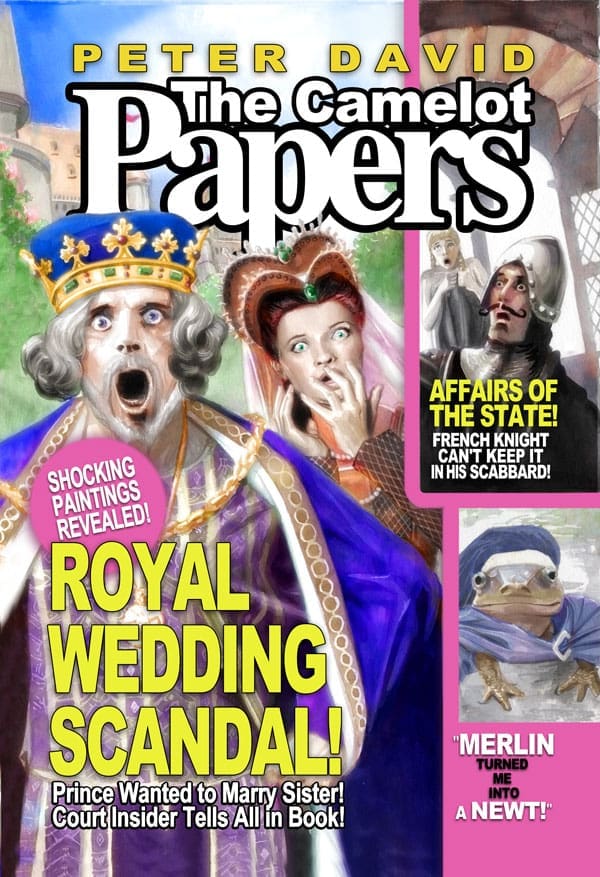
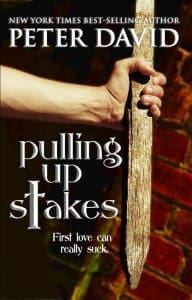
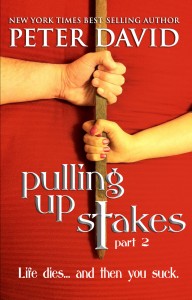
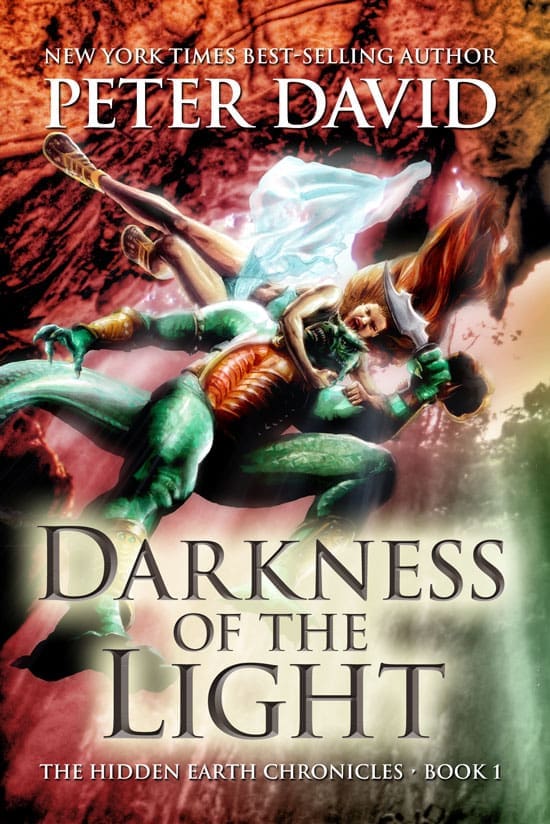
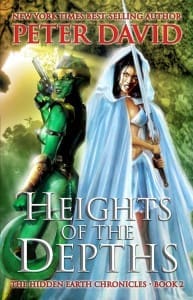
I wonder if the guys who parroted that “marriage ages characters, and kids hate reading about grown-ups” crap ever ran it by any actual kids. They certainly never ran it by ten-year-old me, who read about married Spider-Man with no problem.
I have a sneaking suspicion that what they really mean when they say that stuff is “I use these characters to relive my faded youth, and that doesn’t work so well if they’re married parents like I am.”
Ever since it’s happened, I’ve found it interesting that divorcing Peter and MJ or killing MJ makes Peter “too old,” but there’s nothing wrong with making a literal deal with the devil to get rid of the marriage.
–Daryl
What’ s hilarious is when you consider that I’m recounting the Marvel thinking that led to Betty having a miscarriage…and now it’s only 13 years later and the Hulk has THREE kids.
PAD
“and now it’s only 13 years later and the Hulk has THREE kids.”
So the Hulk is a Mormon? I gotta say, that would make THE BOOK OF MORMON a considerably more interesting play…
To be fair, one of those children is from an alternate future timeline…I think.
But, I mean, Cyclops’s son is older than he is, so I’m not sure that having a child actually “ages” the character at all.
That attitude might explain why so many Disney movies feature orphans (kids, animals, fish, ….). Even Bambi ended up an orphan.
Hans Christian Andersen heroines usually ended up ending up before the story. Then there’s the Brothers Grimm (is ‘grim’ an eponym?)
And Beowulf – the part where Grendel breaks in and starts chewing up the scenery – and the people in it. Maybe that’s why it never got the Marvel treatment.
Perception is 98% of the law in art. “How will people look at this?” say the ones who aren’t just the creatives. I personally thought the Peter/MJ marriage was just natural evolution of the characters. Believe that the guy has the proportionate skill, speed, and strength of a spider but NOT want to marry the woman he loves? Nuh uh.
And suddenly I don’t feel so bad about the Clone hearing Lovecraft stories for the past few years.
What I find interesting is that I was a comic retailer off and on from 1984 to ’99 (even had PAD in my store one time). There were a lot of adult shoppers when I started, but by the time I sold my last comic, we had one teenager on list and I don’t remember any kids who were regular comics buyers. The last hurrah of the juvenile comic reader seemed to come about ’95, when Magic: the Gathering started to snap up allowances, and all the companies were flooding the market with inferior product.
Here is a bold idea. Instead of keeping the characters in a 10 to 15 year reboot cycle so you can always connect with a younger audience why not create new young characters every 10 – 15 years instead? Like Hal Jordan and Barry Allen in the Silver Age and Kyle Rayner and Connor in the 90’s. Let Bruce Wayne retire and have Grayson permanently take over, then Tim can be Batman and so on. Let Peter get marry and have kids and then let Morales take over.I loved DC in the 90s even with all their faults because the story was moving forward. I felt what I was reading was important.
Of course, with the big money the movies are generating we always need a comic that can connect with what movie audiences know. New concepts and characters are too “risky so we’ll continue with the endless reboot cycle.
“But putting all that aside—do writers have the right to redefine and reinterpret stories through their own sensibilities? Aren’t they simply caretakers of long-standing characters, bound and obligated to keep them frozen in amber for the next generation of readers?
Well… no. No, I don’t think so.”
And I emphatically agree. I’m paying the writer to tell me a story. Stories can (and generally should) involve the protagonists changing over time. If I didn’t want to hear your stories, I’d be writing my own, wouldn’t I? (And they’d suck in comparison, but we’ll leave that aside for now.)